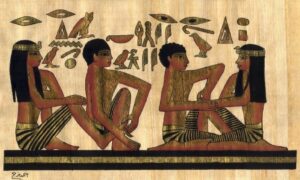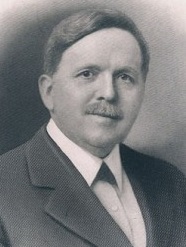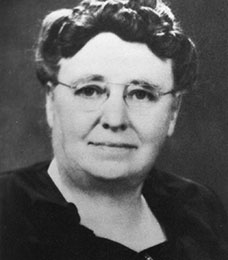Reflexology is an integrative health practice and complementary alternative medicine (CAM) therapy that can be used alone or alongside other medical and therapeutic techniques. Reflexology is an acupressure treatment that stimulates specific reflex points in the feet that correlate to every organ, gland, and tissue in the body. There are also reflex points in the hands and ears, but primary work is done on the feet.
In reflexology theory, when pain and disease are present anywhere in the body, it is an indication of blocked energy or a physical imbalance. Through deep and alternating massage of the specific foot points, reflexology causes an effect (a ‘reflex’) elsewhere in the body that helps to break up these blockages and bring homeostasis to the system. This allows for better nerve impulse response, circulation of oxygen and nutrients to cell tissues, the removal of toxins, and better flow of blood and lymph -- all of which allows the body to return to balance, gain deep relaxation, and heal itself.
Reflexology has been around for centuries, first showing up in Asia and South Asia (China, Japan, India) around  5000BC; and then on images inside the great pyramids in Egypt around 2330BC depicting what looks like people carrying out hand and foot reflexology on each other. In the 1300’s AD, it is believed that Marco Polo translated a Chinese massage book into Italian which brought the practice to Europe, where it was studied across Europe, including the UK and further refined.
5000BC; and then on images inside the great pyramids in Egypt around 2330BC depicting what looks like people carrying out hand and foot reflexology on each other. In the 1300’s AD, it is believed that Marco Polo translated a Chinese massage book into Italian which brought the practice to Europe, where it was studied across Europe, including the UK and further refined.
In 1913, an American ear, nose, and throat surgeon, Dr. William  H. Fitzgerald, brought reflexology to the United States to experiment with the idea of using pressure points to numb certain parts of the body for minor surgeries without the use of anesthesia.
H. Fitzgerald, brought reflexology to the United States to experiment with the idea of using pressure points to numb certain parts of the body for minor surgeries without the use of anesthesia.
Reflexology as we know it today was pioneered by Eunice Ingham (1889 – 1974), a  physical therapist, who built upon Dr. Fitzgerald’s work and developed foot maps depicting points on the feet and how they relate to organs in the body. Eunice conducted teaching seminars across America and overseas where she spoke with medical and naturopath practitioners and wrote a number of books on the methodology. Modern Western reflexology uses the charts and theories Eunice developed which is now called the Ingham Method.
physical therapist, who built upon Dr. Fitzgerald’s work and developed foot maps depicting points on the feet and how they relate to organs in the body. Eunice conducted teaching seminars across America and overseas where she spoke with medical and naturopath practitioners and wrote a number of books on the methodology. Modern Western reflexology uses the charts and theories Eunice developed which is now called the Ingham Method.
Reflexology has been shown to…
-
- Reduce the impact of side effects of chemo for cancer patients by managing pain, fatigue, anxiety (refer to Michigan University research studies on our Research & Resources page).
- Reduce or eliminate seizures in some epilepsy patients (refer to Research & Resources page as well as My Story page).
- Help manage arthritis by reducing pain and swelling by stimulating the release of the body’s pain-relieving chemicals and hormones.
- Relieve digestive disorders and acid reflux by calming the system and stimulating proper digestive activity.
- Reduce headaches and migraines.
- Regulate the hormonal system, including PMS and menopause.
- Help the body to maintain flexibility and movement.
- Reduce stress and anxiety, and promote a general sense of relaxation in body and spirit.
- Detoxify the body and increase energy.
- Reduce low back pain and sciatica.
- Promote balance and normalization of the body systems naturally, thus allowing the body to heal itself.
- Stimulate the lymph system and reduce swelling of lymphopenia.
Reflexology…
-
- is non-invasive, free from any drugs and chemicals, and can be applied to a wide range of health issues.
- is a Complementary & Alternative Medicine (CAM) and included in the same category with acupuncture, massage, chiropractic care.
- does not diagnose, prescribe, or treat specific conditions.
When to avoid reflexology (contraindications - we can discuss your specific situation)
While reflexology is an extremely safe healing practice, it is important to be aware of a few contraindications or times when reflexology might not be a wise choice. These contraindications can include:
Foot injuries
-
-
- Foot fractures, unhealed wounds, or active gout in the foot should avoid reflexology.
- Significant osteoarthritis that impacts the foot or ankle
- Vascular disease of the legs or feet. You should consult with your primary provider prior to beginning reflexology on the feet. You can, however, still get reflexology treatment on your hands and ears.
- Diabetes – Reflexology can be beneficial for diabetes systemically. However, if you have unhealthy tissues present (e.g. ulcers or unhealed skin lesions) on your feet then we would need to do an evaluation and work around these areas. We would be able to work on your hands and ears if certain points were not available on your feet.
-
Pregnancy
-
-
- For women in early pregnancy (the first 6 weeks), the reflexology session is altered by treating the uterine and ovarian reflex points more gently or by avoiding them altogether. In general, caution should be exercised during pregnancy because of reports that stimulation may cause contractions.
- Note: reflexology may assist with labor and may aid in a more comfortable delivery. After 38 weeks, we can use reflexology techniques to stimulate the uterus and ovary reflexes as well the production of Oxytocin to help bring on labor naturally, however reflexology will not "make" labor happen. Reflexology is a very relaxing treatment and works on the nervous system helping the body to change from the sympathetic state of high energy, ‘fight or flight’ mode and into a calm and relaxed parasympathetic state. When the body is in a relaxed state cortisol and adrenaline levels drop, the pituitary can release oxytocin and the body can prepare for labor.
-
Edema, Blood clotting issues
-
-
- If you have current thrombosis or embolism (which is an obstruction of the pulmonary artery or a branch of it by a free-floating blood clot or embolus), you should check with your health practitioner before seeking treatment. Since reflexology improves circulation, it could potentially cause a clot to move towards the heart or brain.
- Acute inflammation of the lymph system, severe edema, swelling in the foot and lower leg area. Reflexology can improve lymph fluid movement, however if the area where we'd be working is affected, we would need to review your specific situation and perhaps start with points on your hand first to reduce swelling and then move to your feet.
- If you’ve just had major surgery, please obtain a release from your doctor before scheduling
-
Other considerations
If you are using other touch therapies, such as massage, acupuncture, cupping, etc., allow at least 48 hours between other touch therapy sessions and your reflexology appointment to avoid an overload on your system.